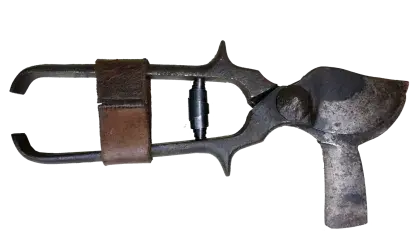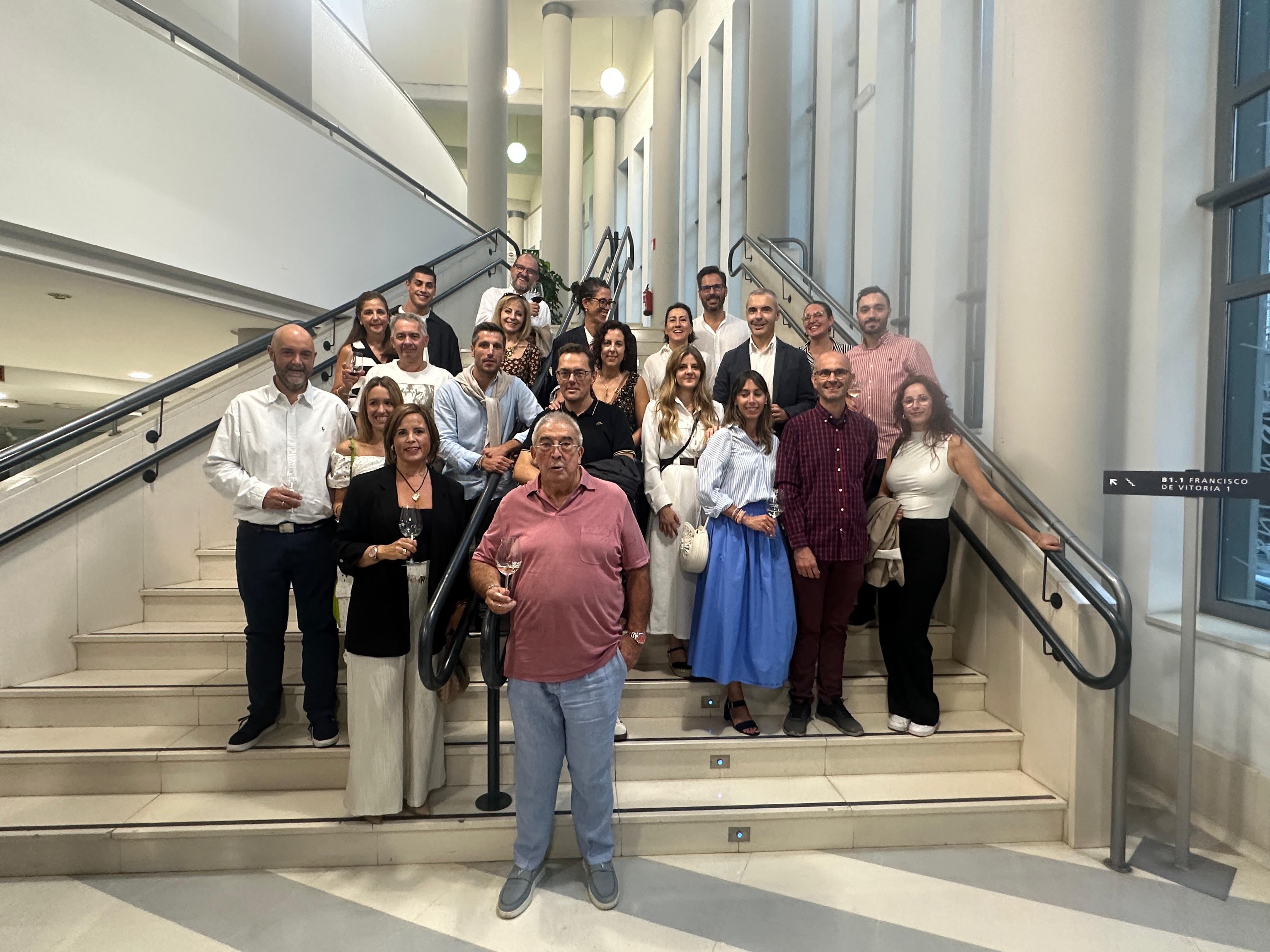If we look at some interesting historical sources, such as the wonderful blog of local historian Jesús Fernández Ibáñez, we discover that our village was one of the first places in Rioja, and in Spain in general, to adopt the secateurs that we still use today.
As expected, the arrival of this pruning tool in Rioja Alavesa is closely linked to Jean Pineau, the famous French master winemaker who was hired by the Alava Provincial Council between 1862 and 1868. Pineau came here with a very clear mandate: to try out and introduce modern grape growing and winemaking practices in our region to produce more refined and, above all, longer-lived wines than those made until then. Pineau's influence was enormous and decisive, especially after he was hired by the Hurtado de Amézaga family, from Marqués de Riscal, one of the largest producers in Elciego. It is believed that at that time, around the mid 1870s, Jean Pineau introduced the secateurs from France, where they were gradually replacing the ancient "serpes", the pruning knife known as "corquete" in Rioja, a small machete with a curved blade towards the tip.
Used since ancient times
Pruning knives have been used since the Iron Age, more than 1,000 years before our time. Farmers used them to cut the branches of trees and crops all over the Mediterranean and beyond. Their design has barely changed over their centuries-old history. It is interesting to observe the similarities between pruning knives of such distant places as Provence, in the south of France, and the eastern most hills of Hungary.
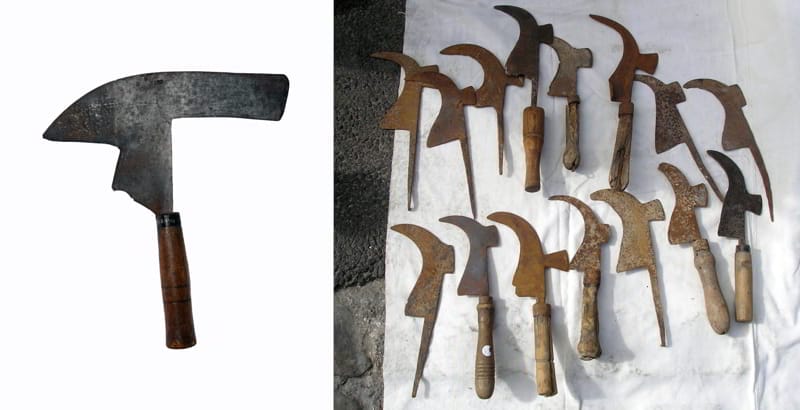 1.300 kilometers separate the Provençal poududouiro from the Hungarian metszökés
1.300 kilometers separate the Provençal poududouiro from the Hungarian metszökés
With its thoroughly practical everyday character, this agricultural tool usually appears in the most diverse archaeological sites. In the image below you can see two pruning knives found in the Languedoc and in Tuscany. The first, on the left, is from the High Middle Ages. The second is much older, from Etruscan times.

Clean and precise
A good use of a pruning knife involves cutting the shoot clean. A kind of fast and very precise blow. It requires experience, patience and a good deal of energy. Secateurs made the process much more efficient. They are much easier to handle, as they distribute the force better and, above all, make it possible to increase accuracy.
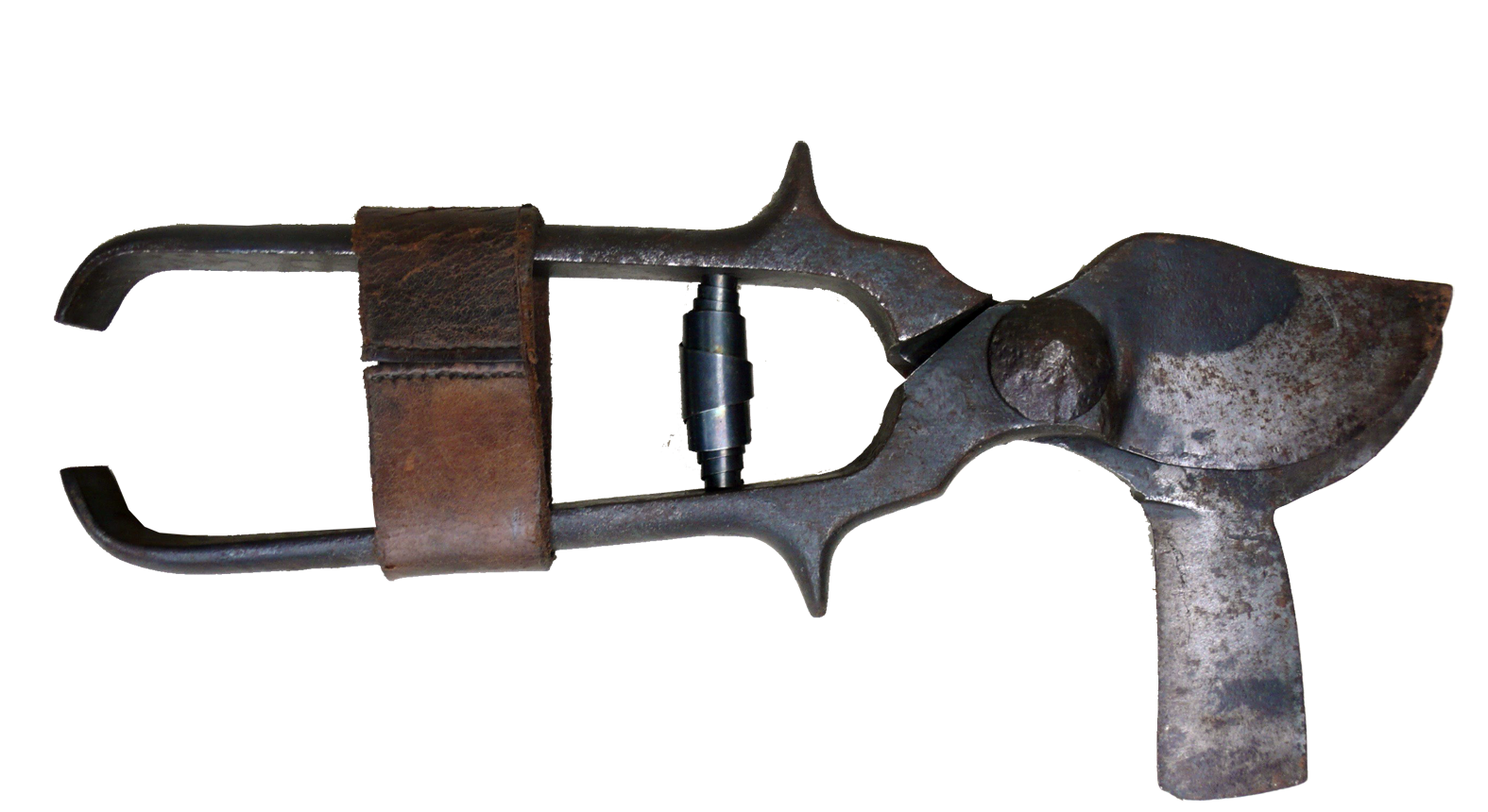 The first scissors used by our grape growers at the end of the 19th century are said to be similar to those in this picture above. One of the two opposite blades had a kind of axe on the back, which allowed the small knots of the vine shoot to be cut in the "old-fashioned" style. We could say that, in a way, this tool represented the transition between a pruning knife and the modern scissors. In a video recorded by some residents of Elciego during a visit to Château Lauga, a winery in the Médoc related with Jean Pineau, we can understand this hybrid use of the primitive secateurs.
The first scissors used by our grape growers at the end of the 19th century are said to be similar to those in this picture above. One of the two opposite blades had a kind of axe on the back, which allowed the small knots of the vine shoot to be cut in the "old-fashioned" style. We could say that, in a way, this tool represented the transition between a pruning knife and the modern scissors. In a video recorded by some residents of Elciego during a visit to Château Lauga, a winery in the Médoc related with Jean Pineau, we can understand this hybrid use of the primitive secateurs.
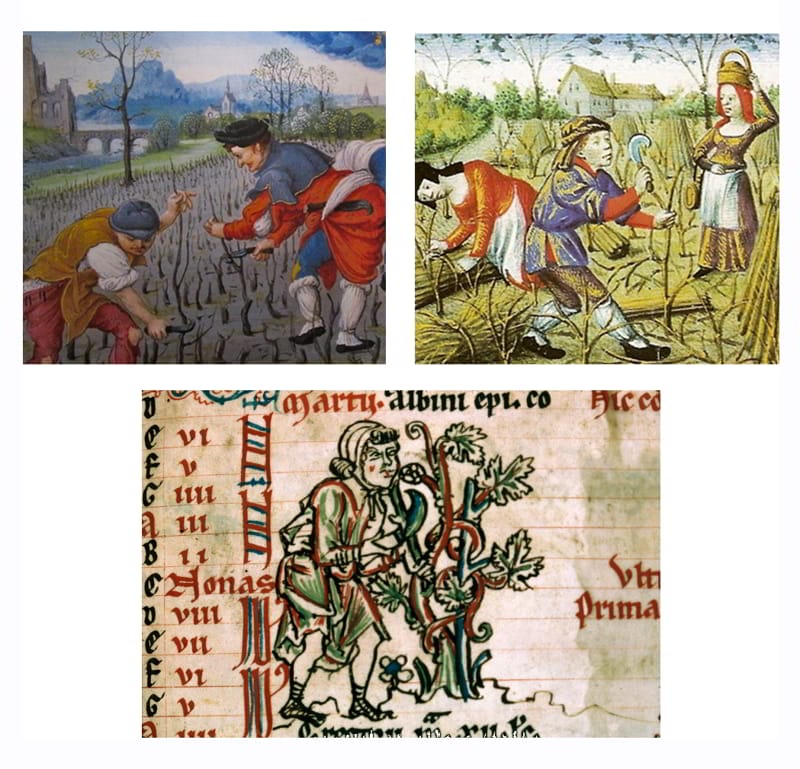 French medieval representations where we can see the use of "serpes" or pruning knives to prune the vineyard.
French medieval representations where we can see the use of "serpes" or pruning knives to prune the vineyard.
You may also be interested in:
